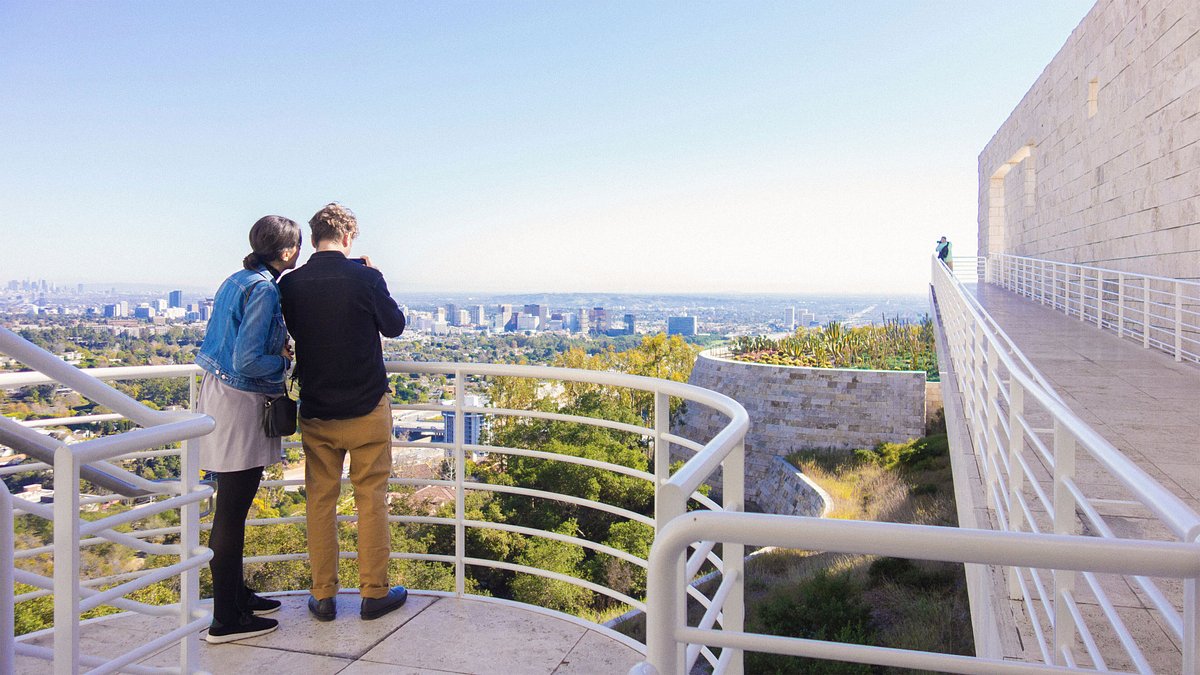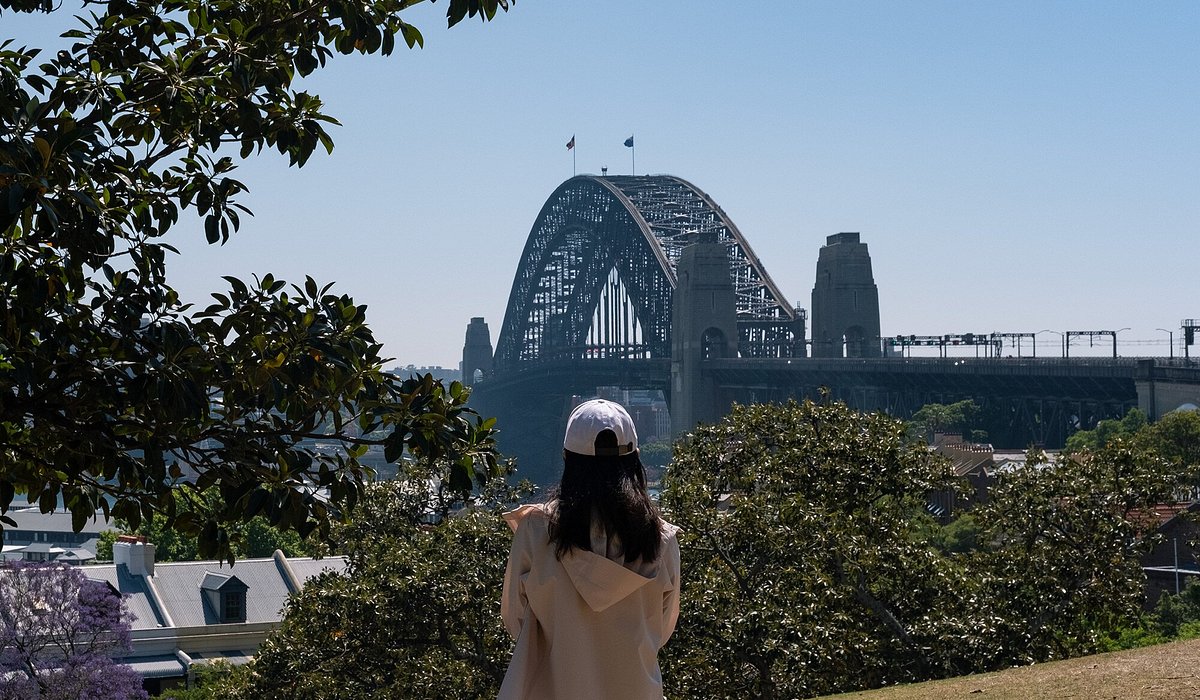People from Munich usually don’t say they’re German. They are first and foremost Bavarians. This vast area remained its own kingdom until fairly recently, not becoming a “free state” of Germany until 1949. Bavarians speak their distinct dialect of German and come together to celebrate their culture, which culminates in the annual Oktoberfest. Nowhere else is this boisterous beer bash more loved by one and all than in Munich.
Because of its history, Munich and the surrounding area have some of the most eye-catching palaces in all of Germany. Neuschwanstein and its fairytale-esque scenery are impressive, but the Munich Residenz has a way more opulent interior. And as far as art galleries go, the Alte Pinakothek in Munich is one of the country’s best. We have our favorites, of course, but we’ve also let Tripadvisor travelers give their opinions in the recommendations below.
DAY ONE
MORNING: Step back in time
Start off with a quick breakfast at Café-Bistro Dallmayr, a sweet little spot in the center of the Altstadt, or Old Town. This puts you steps away from Munich’s ornate Residenz, once a royal palace built for the Bavarian dukes. The façade is a bit austere, but the interior is a stunner. If we had to pick a favorite part of the palace, it would be the 200-foot-long Antiquarium, an opulent gallery built by Duke Albrecht V to show off his collection of antiques. You’ll think you made a wrong turn and ended up in Renaissance Italy.
Carefully time your visit to the Marienplatz—the city’s sprawling central square—in order to catch one of the best shows. At 11 a.m. and noon, everyone’s attention is focused on the elaborate neo-Gothic façade of the Neus Rathaus, or New Town Hall. A few minutes after the 43 bells of the glockenspiel begin to ring, large figures come to life. Musicians celebrate a royal wedding. Barrel-makers dance in the streets. Two knights on horseback compete in a jousting match, and the Bavarian knight in blue and white always beats his opponent.
You can head to the top of the tower to take in the view, but there are smaller crowds at nearby St. Peter’s Church. Dating back to the 11th century, the cathedral that locals call “Old Peter” has a Baroque high altar that’s a true treasure. Climb the bell tower’s narrow wooden stairs for a breathtaking panorama.
Travelers say: “[Marienplatz] will leave you awestruck. This place will stay with you for a lifetime. It’s a must-see if you visit Bavaria and most definitely if you are in Munich. Can’t avoid it since it is the heart of Munich. The gothic architecture here is breathtaking.” —@NikaNumber1
AFTERNOON: Pour a pint or two
You’ll work up an appetite with a visit to the Viktualienmarkt, once an outdoor fruit and vegetable market that now has a little bit of everything, including meats, cheeses, and delectable baked goods. If you’re not planning on making a meal out of your selections, you’ll definitely want to pick up a few pretzels for snacking later. There’s a beer garden here serving one of the city’s best brews. The one on tap that day is displayed on the maypole.
Perhaps the city’s best-known landmark is the Hofbräuhaus, a beer hall that first opened in 1589. The neo-Renaissance building you see today was built in 1898. The cavernous main hall can seat 1,000 people, and most days it comes pretty close. Oompah bands make sure everything is lively while you enjoy sauerkraut, bratwurst, and steins of beer as big as your head. If you want all that without the hordes of visitors, head to nearby Augustiner am Platzl.
Even better is the pagoda-shaped beer garden tucked away in the English Garden, a vast swath of green that puts New York City’s Central Park to shame. There are nearly 50 miles of walking paths, crossing more than 100 bridges along the way. There are all the usual activities, such as cycling in the summer and cross-country skiing in the winter. But year-round there’s one activity that might leave you scratching your head. Near the entrance to the park, surfers ride a man-made wave called Eisbachwelle, a rather unexpected treat to watch.
- Finding your way around the twisting streets and alleys of Munich can be a challenge, so why not let someone else do all the work? Limited to a small group, the Munich Old Town Walking Tour takes you past all the most-loved landmarks.
- If you’re hoping to taste the best of the wurst, join the Viktualienmarkt and Beyond Tour. Besides a stroll through the food market, you’ll get to try several different sausages, watch potato noodles being fried, and, of course, sample unique beers.
- The ghosts that haunt these streets do more than rattle a few chains. They have left behind physical evidence, such as a devilish footprint in one of the city’s most prominent churches in the Altstadt. Learn all about it on the highly-rated Munich Ghosts and Spirits Evening Walking Tour.
EVENING: Eat dinner with a show
Back in the Altstadt, you shouldn’t pass up dinner at Brasserie Les Deux, an award-winning bistro on the ground floor of the fancier restaurant of the same name. Besides the altitude, the prices are also much lower. The well-traveled menu includes dishes like grilled scallops simmered in a Thai-style sauce.
The bistro’s location, on the Marienplatz, means you can stop by the Neues Rathaus to watch the figure of the night watchman blow his horn. This encore performance of the glockenspiel, taking place every night at 9, is the perfect end to the evening.
DAY TWO

MORNING: See wall-to-wall masterpieces
We’re doing some gallery-hopping today in Kunstareal—the Museum Quarter—so fuel up for the day at Sophia’s. Many of the city’s restaurants are tucked away in cellars and other dimly lit spaces, so it’s a nice change to be in a dining room with sunshine pouring through two-story-tall windows. The breakfasts are tasty, as well.
Head first to the Alte Pinakothek, or Old Picture Gallery. The name doesn’t really communicate the fact that the collection—14th to 18th century Old Masters like Raphael, Rubens, and
Rembrandt—is one of the best in Europe. The 1836 building is also a masterpiece in its own right. Shockingly modern when it was built, it was one of the first art galleries. The nearby Pinakothek der Moderne has a similarly impressive lineup of artists from the last century, including Warhol, Hockney, and Rauchenburg.
Although its official name is the Stadtische Galerie im Lenbachhaus, this show-stopping museum is most often known simply as Lenbachhaus. The owner of this Florentine-style villa was Franz von Lenbach, part of the groundbreaking Blue Rider art movement. You’ve probably heard of some others, such as Franz Marc, Paul Klee, Wassily Kandinsky. They’re all represented here, and the collection is surprisingly compelling.
- Outside of the Altstadt, getting around Munich is a little more challenging. The Munich City Bike Tour is a great way to explore a much broader section of the city, including the Alte Pinakothek and other major destinations in the Museum Quarter.
- Most city tours follow pretty much the same route through the Old City, but the Private Custom Munich Tour with a Local lets you call the shots. Answer a short questionnaire, and you’ll be given a customized itinerary and a guide who knows the area.
AFTERNOON: Explore serene parks and royal palaces
Serving arguably Munich’s best schnitzel—thinly sliced meat that’s breaded and fried—Steinheil 16 should be on your list for lunch. The portions are ample, sometimes nearly covering the plate, served with nothing more than a pile of fries and a wedge of lemon. Wash it all down in a reasonably sized glass of local beer.
A short drive north, Olympiapark is a pleasant spot for a stroll. Because this tree-covered park—the site of the 1972 Olympics—is a little farther from the city center, it’s not nearly as packed as English Garden. The centerpiece is the 50-story Olympic Tower, which on a clear day has views of the snow-covered Bavarian Alps.
If you love cars (we mean really love cars), you should make your way to the nearby BMW Museum. It’s a stunner from the outside, with a tower designed to resemble a four-cylinder engine. You get a good look at some classic cars, including a sporty BMW 507 once owned by a young Elvis Presley. Legend has it that it was painted red because female fans kept leaving lipstick marks on the hood.
Nymphenburg Palace, done up in Baroque and Rococo style, is a don’t-miss attraction in Munich (and an easy 10-minute drive). This Bavarian royalty summer home was designed to put to shame similar castles in Italy and France. Take your time gawing at the three-story-tall Steinerner Saal (Great Hall), lit by massive chandeliers. Look up: The ceiling features the god Helios riding in on a gold chariot. The palace grounds are dotted with tranquil lakes and traversed by miles of gravel-lined trails.
Travelers say: “Nymphenburg Palace is a must-visit for history enthusiasts, art lovers, and anyone seeking to immerse themselves in the regal heritage of Bavaria. The palace’s grandeur, with its opulent interiors and expansive gardens, was a visual delight. The guided tours offered valuable insights into the history of the Wittelsbach dynasty and the significance of each room. Strolling through the palace grounds and admiring the cascading fountains and manicured lawns was a tranquil escape.” —@Autum W
EVENING: Back to the beer garden
Not far from the gates of Nymphenburg Palace, Risotto is ranked among the best of the best by Tripadvisor readers. We heartily agree. There’s a pleasant patio shaded by massive umbrellas, but for a romantic meal, reserve a table in the candlelit dining room. As the name implies, there are plenty of rice dishes on the menu, including a creamy risotto with pears, walnuts, and gorgonzola cheese. Just save room for the tiramisu.
Risotto is in a mostly residential neighborhood, so we recommend heading back toward the Kunstareal for a nightcap. One of our favorite hangouts is the massive beer garden at Augustiner-Keller. Take a look inside at the barrel-vault ceiling, wagon-wheel lighting fixtures, and a little stage for the local bands that perform nightly.
DAY THREE

MORNING: Castle-hop like a king
Today we’re headed south of the city for some castle-hopping in nearby Bavaria. Go a little over an hour to Schloss Linderhof, one of the three castles King Ludwig II started building while he was alive (and the only to be completed). Basically a hunting lodge, this French-style chateau was his favorite country retreat. The exterior is rather sedate, especially if you’ve already seen his other castles. But the interior—and we can’t believe we’re saying this about a palace—is a little too much. There’s barely a surface that doesn’t glitter with crystals or gleam with gold leaf.
Continue your journey at Ettal Abbey, a Benedictine monastery where 50 monks still reside. The showpiece here is the domed church, with a dazzling Baroque interior. There’s also a centuries-old brewery on the premises, although it’s only open for tours a few days a week.
AFTERNOON: Visit the crown jewel of Bavaria
In the town of Ettal, there are a few places to stop for a quick lunch. Our favorite, and a frequent destination for Tripadvisor readers, is Ettaler Muhle. Take your pick between the wood-beamed dining room and tree-shaded patio, then wash down the schnitzel and other hearty dishes with a glass of Ettaler, brewed at the monastery.
Pass by the village of Oberammergau as you head toward what’s perhaps the world’s most picturesque castle, Schloss Neuschwanstein. King Ludwig II already had his family’s castle on a nearby peak, as well as an official palace in Munich, but he decided that he needed to build another one high atop Swan’s Rock. Although this Romanesque-style fantasy was never finished in his lifetime, it’s still breathtaking. The throne room—inspired by the opulence of Byzantine churches—is capped by a sky-blue cupola covered in stars. Make sure to book tickets well in advance, because the mandatory tours regularly sell out.
Travelers say: “If you can only visit one castle in Europe, visit Neuschwanstein. This is the place that offers it all—a fascinating story of a stunning castle, situated on a beautiful hill with a peaceful lake at its foot. (Note: This is the new castle built by King Ludwig II, located a 40-minute walk from the old castle.) You can easily spend a full day here, so arrive as early as you can to make the most of it.” —@xchenxia
- Avoid navigating through the Bavarian countryside, and leave the driving to the folks running the Neuschwanstein Castle and Linderhof Palace Day Tour. This is a full-day bus tour—lasting more than 10 hours—so you definitely get your money’s worth.
- To focus your attention on King Ludwig II’s most massive undertaking, opt for the Neuschwanstein Castle Day Tour. You and your group will travel to the town closest to the castle by train. Both this and the previous tour we mentioned includes skip-the-line access to maximize your time at the castle.
- If you’ve already seen Neuschwanstein, there are plenty of other nearby estates to explore. The Romantic Road Day Tour from Munich takes you to Harburg Castle, a 10th-century hilltop fortress that is actually as old as Neuschwanstein pretends to be. You pass through marvelous medieval villages along the way.
EVENING: Return to Munich for a memorable meal
It’s a 90-minute drive back to Munich, where you’ll definitely be ready for dinner. If you want to cap off your trip with a sky’s-the-limit meal at one of Germany’s best restaurants, reserve weeks (or months) ahead at the two-Michelin-starred Tantris. Choose either the six- or eight-course meal, both of which lean toward French food. And don’t skip the thoughtful wine pairings (although you’ll want to take a look inside the glass-walled wine cabinet). For an equally memorable meal in the same neighborhood, consider Werneckhof Sigi Schelling, run by one of Munich’s best-known female chefs.
Rather have something more relaxed? Check out Irmi, located right in the center of the city. It serves all the classic Bavarian dishes (think: roast pork with potato dumplings or bratwurst with sauerkraut). In the delightfully modern dining room, there’s not a dirndl or lederhose in sight.
Know Before You Go
-
The shoulder season of March to June is a great time to visit Munich, as the weather is warm and the crowds are manageable. September and October have equally nice weather, but you are constantly battling the hoards that descend on the city for Oktoberfest. Summer is crowded and hot, while winter can be brutally cold. On top of that, holiday festivities keep hotel prices high.
-
Europeans descend on the city for the weekend, so weekdays are usually a little quieter no matter what time of year you visit. Most museums are closed on Monday, so Tuesday to Thursday might be the best day of the week to visit.
-
The majority of shops are open Monday to Saturday, although some close a little early on Saturday evening. Almost all shops are closed on Sunday, but most restaurants and beer gardens will be open.
-
Altstadt: There’s a cluster of reasonably priced lodgings around the train station (Hotel Metropol is a standout here), but in the surrounding streets Munich’s Old City has a wide range of lodging options. Munich’s oldest lodging, the Hotel Torbraeu, has opened its doors to guests since 1490. It’s gets shoutouts from Tripadvisor readers for its central location (just a few blocks from the Marienplatz), old-world charm, and excellent service. The Platzl Hotel, near the Hofbräuhaus, gets an equal number of thumbs up.
English Garden: Across the bridge from the entrance to English Garden, the Hotel Muenchen Palace sits on a tree-lined street in a quiet neighborhood. The boutique hotel — rated as best of the best by Tripadvisor readers — has plenty of outdoor space, including many rooms with private balconies.
-
Public transportation: As with most of Germany, Munich’s public transportation system is state of the art. You have trams, buses, subways, and commuter trains at your disposal. You’ll probably mostly take advantage of the U-Bahn, the subway system that fans out across the city, but the interconnected S-Bahn commuter trains may also be handy, especially when you’re headed to and from the airport.
By bike: MVG Rad, Munich’s bike share system, is inexpensive and easy to use. Just download the app and you can pick up a bike just about anywhere in the city center. There’s usually a fleet of bikes outside every U-Bahn and S-Bahn station.
By taxi: Munich’s cream-colored taxis all use meters to calculate the fare. You can easily hail one on the street or at a taxi stand. Uber operates in Munich, but Lyft does not.
Airport transfers: S-Bahn trains run to Munich International Airport along the S1 and S8 lines. The trip to the city center takes a little over half an hour. Taxis take about 45 minutes if the traffic into the city isn’t too bad.




